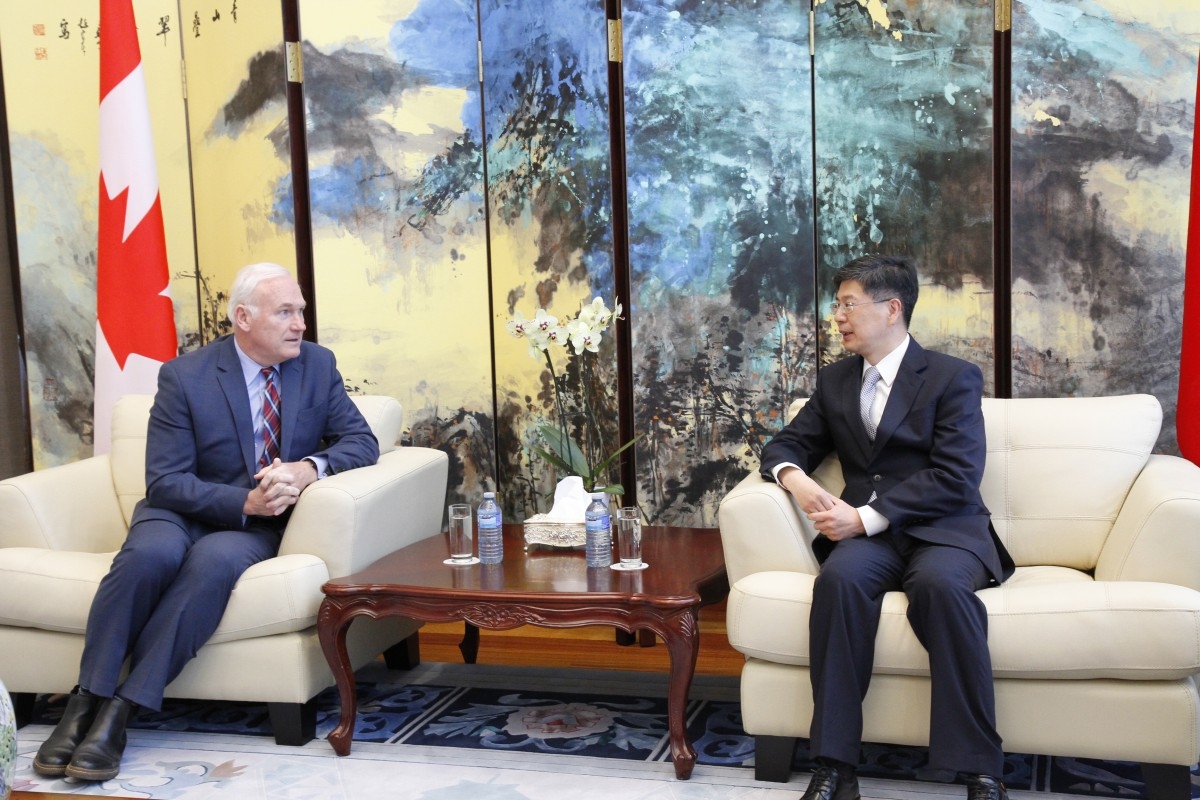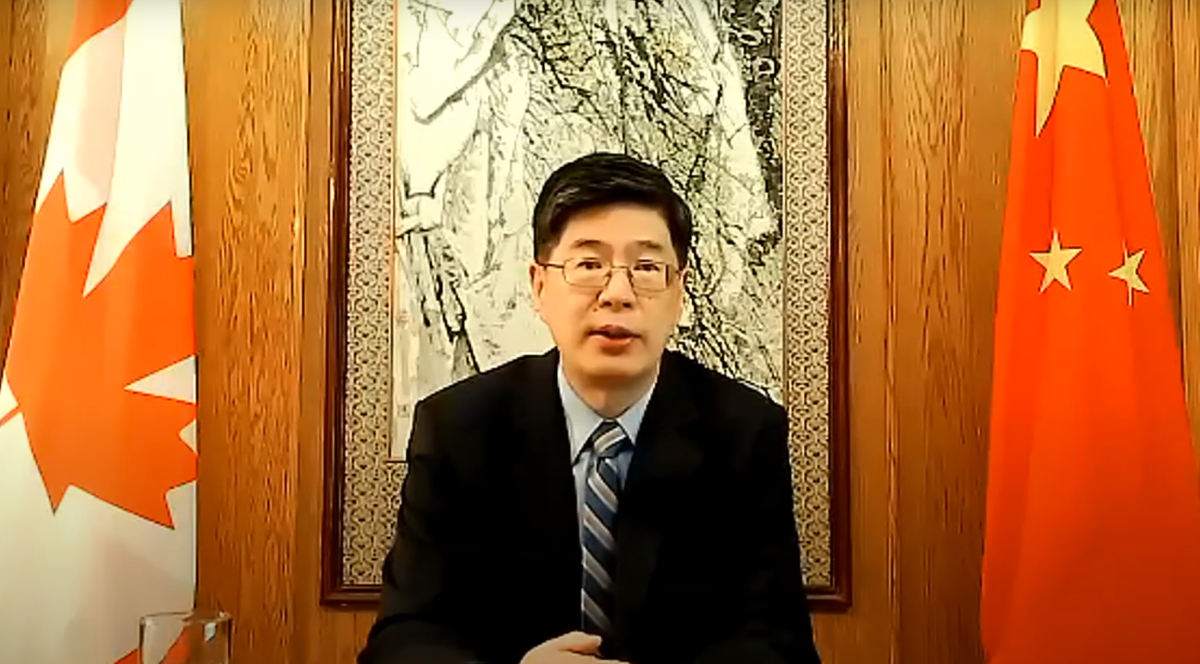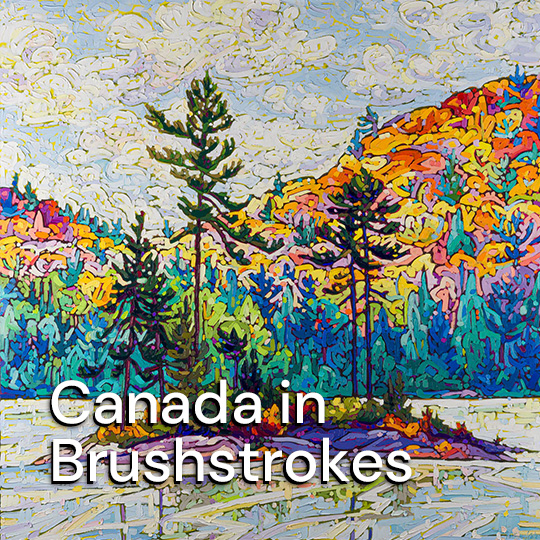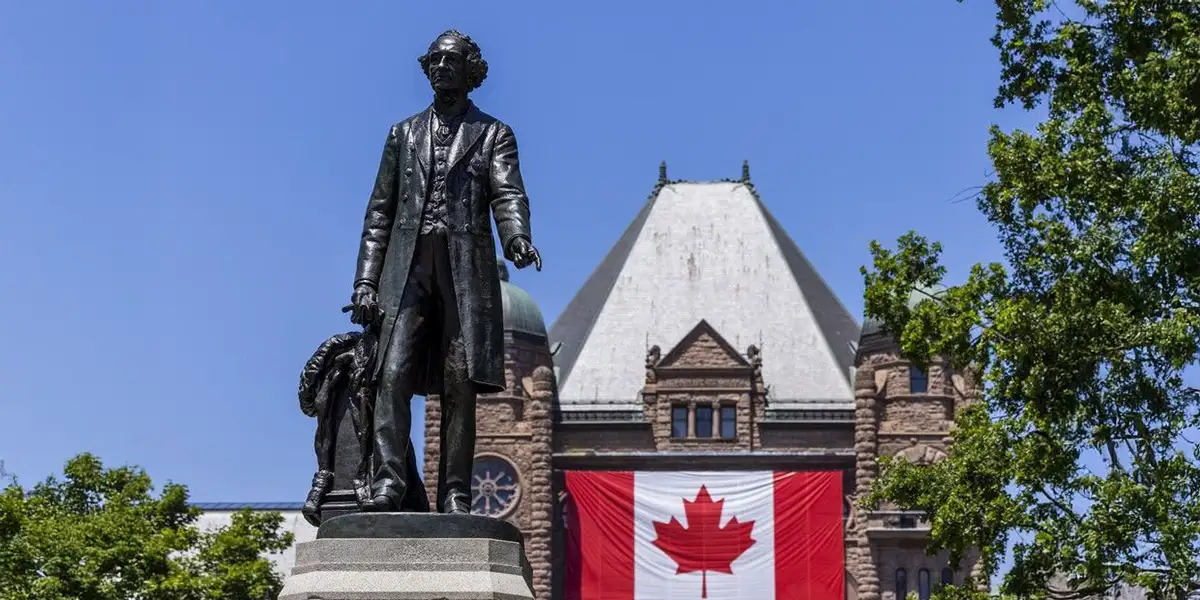
When the Historic Sites and Monuments Board Forgets What a Monument Is For
My 17-year-old self, sitting in Hal Betts Grade 12 Enriched History class at Harrison Trimble High School in Moncton, would never have imagined being the author of such a title. Mr. Betts taught a robust, dynamic and exciting brand of Canadian history. I wrote essays on Pierre Elliott Trudeau’s Federalism and the French Canadians, the decimation of the Maritime manufacturing sector from Confederation to the Second World War as a result of deliberate federal policies, and the new policy of bilingualism, seated as I was in one of the epicentres for early conflict. Mr. Betts believed history should be experienced in the flesh so our history tour that year was to Newfoundland to meet Joey Smallwood, the lone surviving Father of Confederation. Canada’s first Prime Minister was too fusty, too British for my Irish Canadian and Liberal sensibilities. Most importantly, the narrative was leaden and no longer had resonance some 85 years after his death.
Fast forward another 49 years, to Blacklock’s Reporter story on Thursday last that at a December 2023 meeting of the Historic Sites and Monuments Board of Canada (the Board), members determined that Sir John A. Macdonald was “too polarizing and controversial” and that no further plaques would be erected in his honour. Blacklock’s further reported that minutes of the meeting went on to state, “The board recommended that Sir John A. Macdonald be commemorated by means of information to be made available on the Parks Canada website, and that no plaque be erected”. It is unclear whether this edict refers to a specific recently proposed plaque, a blanket prohibition on new plaques or will result in existing plaques being removed.
History Is Messy. That’s Why It Matters.
History “too polarizing and controversial”? Well yes, actually, it is. While chronological, history is not linear, and its’ ramifications unequal. Imagine water poured over uneven ground. It flows in every direction, pooling in some areas, running into crevices and bypassing slightly higher ground. History is the story of victors and vanquished, everyday events and those of seismic impact. It is rarely black or white; grey is the predominant palette. History is said to have a right and wrong side – “there’s just winners and losers, and don’t get caught on the wrong side of that line”, as Springsteen sang.
Complex and complicated? Forty years ago, I was in Israel, struggling to understand the ancient hatreds, and battles over what is a surprisingly small patch of land. An Irish priest Father Luke Dempsey who taught at Jerusalem’s world-famous École Biblique, told myself and my friend David over a long conversation, that “if you’re not confused, you are ill-informed”. This is why we have historians. To chronicle historical events, identify motivation and motivators, assess the impacts beyond the headlines of the day, shine light in dark corners, and elucidate the ordinary and unknown.
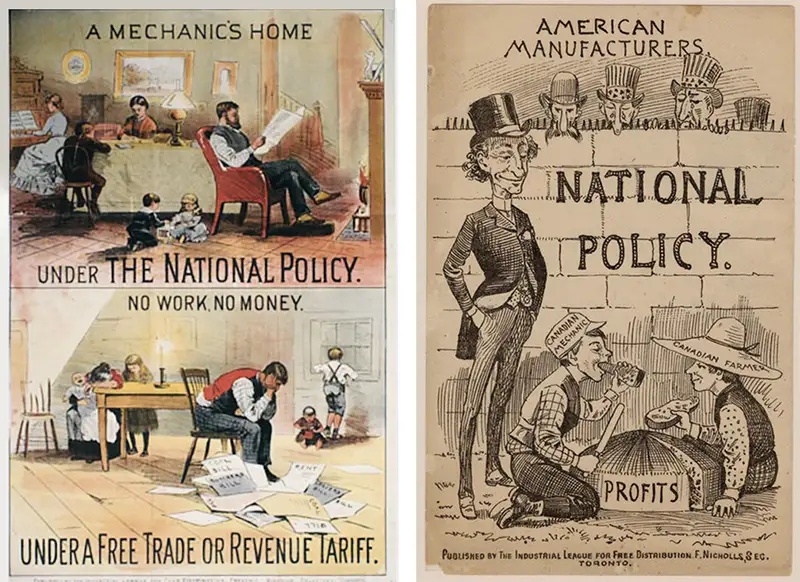
ABOVE: A poster extolling the National Policy. RIGHT: An editorial cartoon on the 1880s version of Canada Strong.
Enter the Board. Twenty members strong, it includes PhDs in history and political science, biologists and heritage architects, a hip-hop artist, and Elders steeped in Indigenous knowledge. Plus, a scholar of Canadian Prime Ministers and one of Canada’s pre-eminent war historians. In other words, a collection of highly qualified and learned individuals from across the country. Yet, history is hard and this Board chose to simply sweep the matter aside and consign the memory and legacy of one of Canada’s greatest to the dustbin of history – or in this case, a website and a URL that few will ever find.
This is egregious on so many levels, including the sophomoric research that obviously went into it. Full disclosure: I have held consultations with the line staff at the Historic Designations branch of Parks Canada, and have great respect for their professionalism and passion for history. This is on the Board. First of all, who the hell do these people think they are, that they might speak for the entirety of Canada and pass sweeping judgement on its controversial (and yes, polarizing) 158-year history? They are OIC appointments – political appointees through the Order in Council process. They are unelected, accountable only to the Minister of Canadian Identity Steven Guilbeault (Environment Minister prior to the 2025 election), and he’s unlikely to be accountable for this travesty. The chair of the Board is a former New Brunswick Liberal cabinet minister and former bureaucrat in that most political of federal departments, the Department of Fisheries and Oceans. Granted, this was a recommendation, but it’s one you can easily imagine an ideologue like Guilbeault gobbling up. No skin off Quebec’s nose. The Board was established in 1919 and given a legislated foundation in 1953. Perhaps we should be thankful that Macdonald survived this long.
Second, the legislated mandate of the Board is to make recommendations for marking historic persons, places, and events, establishing historic museums and advising the minister on the exercise of ministerial power. In other words, should the government buy this property or that, or erect a plaque marking some historically significant person or place. Straightforward. In recent months, we’ve seen plaques erected to mark the historical significance of the Village of Rockcliffe (no doubt with a long-term view from the good burghers of limiting intensification north of Montreal Road), and Canada House situated on Trafalgar Square in London. There are over 2,200 such designations across the country.
In June 2022, the Trudeau government introduced Bill C-23: An Act Respecting Places, Persons, and Events of National Historical Significance, which in part was intended to expand the membership to include more Indigenous participation as per the recommendations of the Truth and Reconciliation Commission, and broaden the mandates of both the Minister and the Board. The bill never made it to Committee and died on the Order Paper with the 2025 election call. Despite this, the government made the appropriate call to expand the number of Indigenous representatives. Board members though appear to have taken on the envisioned mandate to expound more broadly on the ‘rightness’ of Canadian history.
Third, a graduate thesis could be written on this slovenly and lax approach to history. Rather inconsequential if this old house or that bridge is denied historical designation. Quite another when the subject is the architect of our nation. Apparently, the Board referred specifically to Macdonald’s role in the establishment of the residential school system, and the imposition of the Chinese head tax. No question that the former policy was incredibly destructive to First Nations with consequences all Canadians live with today, and the second was blatantly racist. But history is complex. Macdonald’s government did establish residential schools in the 1880s, and by the time of his death in 1891, there were 40 schools across the country with approximately 2,500 students. By 1907, there were 70 such schools with about 4,000 students. By this time, Macdonald had been in his grave for 16 years and Sir Wilfred Laurier had been prime minister for 11 years. Residential school enrollment peaked in the early 50s, and the number of schools peaked in 1965, during the governments of Louis St-Laurent and Lester B. Pearson, respectively.
In 1907, Dr. Peter Bryce, Chief Medical Officer of the Department of Indian Affairs wrote a devastating report showing the extremely high rates of death from tuberculosis in the schools. He conducted another study in 1909 reporting again on this shocking situation. He was ignored and because he would not be silenced, was drummed out of the civil service. He spent his own money in 1922 to publish an account of his studies entitled The Story of A National Crime: An Appeal for Justice to the Indians of Canada. Neither Sir Wilfred Laurier or William Lyon Mackenzie King lifted a finger as prime minister to address the issue. Bryce was only vindicated in the years after his death.
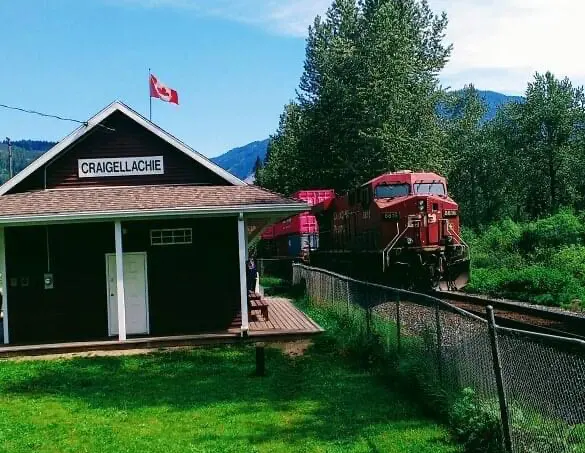
ABOVE: A CPR train roars through Craigellachie, BC, site of the Last Spike. (Photo: Dan McCarthy)
Similarly, with the Chinese head tax. Macdonald’s government established the tax set at $50 to limit Chinese immigration following the completion of the Canadian Pacific Railway in 1885. In 1900, the tax was increased to $100, and then to $500 in 1903. Prime Minister during the time the tax was doubled and then increased ten-fold? Sir Wilfred Laurier. The head tax was abolished in 1923 and replaced by the Chinese Immigration Act, also known as the Chinese Exclusion Act. Mackenzie King was prime minister during this period. No need for a head tax if your immigration goal was zero.
With these facts in mind, I visited Laurier House in Ottawa, a National Historic Site, on Saturday. Previously the residence of both Sir Wilfred Laurier, and King following the death of Laurier’s wife Zoe, the house is located in Ottawa’s leafy Sandy Hill neighbourhood, a short walk to Parliament Hill. Given the above, I wondered whether the House – essentially a museum – would provide any indication of these gentlemen’s policy failings. While the Parks Canada staff were welcoming, energetic and informative about the history of the residence and its inhabitants, there was nary a glimpse into these darker issues.
I am not for a moment suggesting that the Board initiate a witch hunt into the history of the iconic prime ministers cited above. Simply that history is complex, and blanket condemnations do not serve the nation well.
John A. Macdonald created Canada Strong
History is not just polarizing and controversial; it is ironic at times. While it is likely a subsequent prime minister would have done so, Banff National Park was established in 1885 by Macdonald. It was initially a small reserve around the Cave and Basin Hot Springs, but it was the birth of Canada’s national parks system. This is also the summer of the Canada Strong Pass, offering free admission to Parks Canada sites, including national historic sites, national museums, discounts for camping fees, and VIA Rail tickets.
In his Canada Day statement, Prime Minister Carney stated, “One hundred and fifty-eight years ago, a few provinces bet on the idea that they’d be stronger together than they could ever be apart”. Yes, they did. From the Charlottetown and Quebec Conferences, to negotiating the British North America Act in London, Sir John A. Macdonald was the essential protagonist. While he obviously had allies, Confederation simply would not have occurred at that time, in that form without Macdonald. Speaking in 2015, then-prime minister Stephen Harper said that Confederation was seen as a “…flight of fancy. Yet Macdonald achieved it. Others had ruminated about Confederation, but only he saw how to get it done – how to make the case for unity, how to rally common hopes and fears, how to overcome different perspectives and interests.”

ABOVE: Macdonald once appeared on the $10 bill but was replaced by Viola Desmond. The reverse image of Sarnia’s Chemical Valley was also cancelled. Laurier remains on the $5 (Photo: Bank of Canada)
The threat of Fenian Raids from the US dissipated with Confederation, and his government’s priority to build a railway to the Pacific brought Manitoba and British Columbia into Canada. The railway and Macdonald’s subsequent decision to station the Royal Canadian Mounted Police to the Prairies helped thwart American Manifest Destiny dreams, and provided the political stability that would see the 1870 purchase of Rupert’s Land culminate in the creation of the provinces of Saskatchewan and Alberta in 1905. His National Policy of high tariffs to keep out American goods was the original ‘elbows up”! Macdonald’s nation-building exercises literally define Canada Strong.
Ironic or not, Macdonald really doesn’t need another plaque. We think of Canada as a young country but it’s actually one of the oldest democracies. It has endured for 158 years in large part because of the foundations laid by Macdonald’s governments. Peace, Order and Good Government is not just a clause in a musty document in Westminster Palace. While not always realized, it has ordered our civic life. Macdonald is the architect of a country – improbably born – that is envied around the globe.
Macdonald’s legacy is strengthened with every chorus of “the true north, strong and free”, with every new Canadian taking the Oath of Citizenship, with every visit to a national park or historic site, with every car trip over Roger’s Pass, and with every Standing Up for Canada radio spot by Anne Murray or Rick Mercer. It’s one thing for the mobs to deface and topple Macdonald’s statues. Quite another for the Historic Sites and Monuments Board of Canada to besmirch his memory in such a cavalier fashion. Canadians are owed an explanation and an apology.
Header image: John A. Macdonald unveiled at Queen’s Park. (Photo: Courtesy the Toronto Sun)



